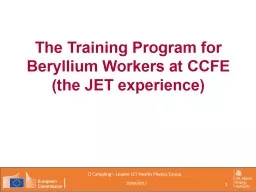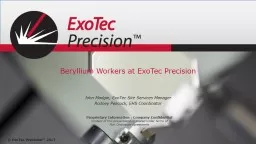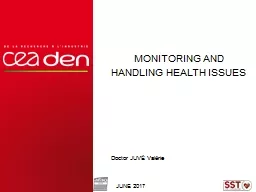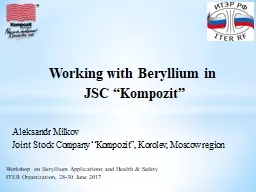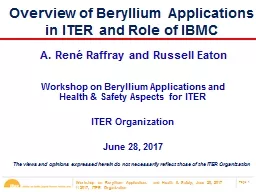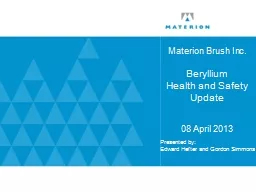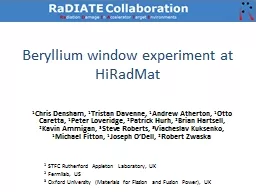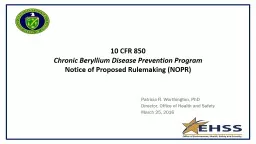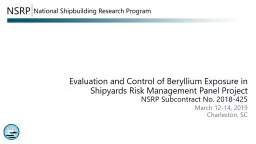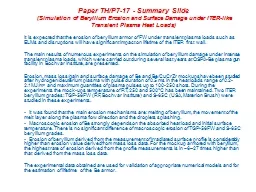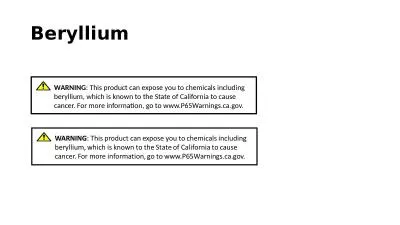PPT-The Training Program for Beryllium Workers at CCFE
Author : pasty-toler | Published Date : 2018-11-03
the JET experience In the UK work with Be is covered by The Control of Substances Hazardous to Health Regulations 2002 COSHH The Health amp Safety at Work Act
Presentation Embed Code
Download Presentation
Download Presentation The PPT/PDF document "The Training Program for Beryllium Worke..." is the property of its rightful owner. Permission is granted to download and print the materials on this website for personal, non-commercial use only, and to display it on your personal computer provided you do not modify the materials and that you retain all copyright notices contained in the materials. By downloading content from our website, you accept the terms of this agreement.
The Training Program for Beryllium Workers at CCFE: Transcript
Download Rules Of Document
"The Training Program for Beryllium Workers at CCFE"The content belongs to its owner. You may download and print it for personal use, without modification, and keep all copyright notices. By downloading, you agree to these terms.
Related Documents

